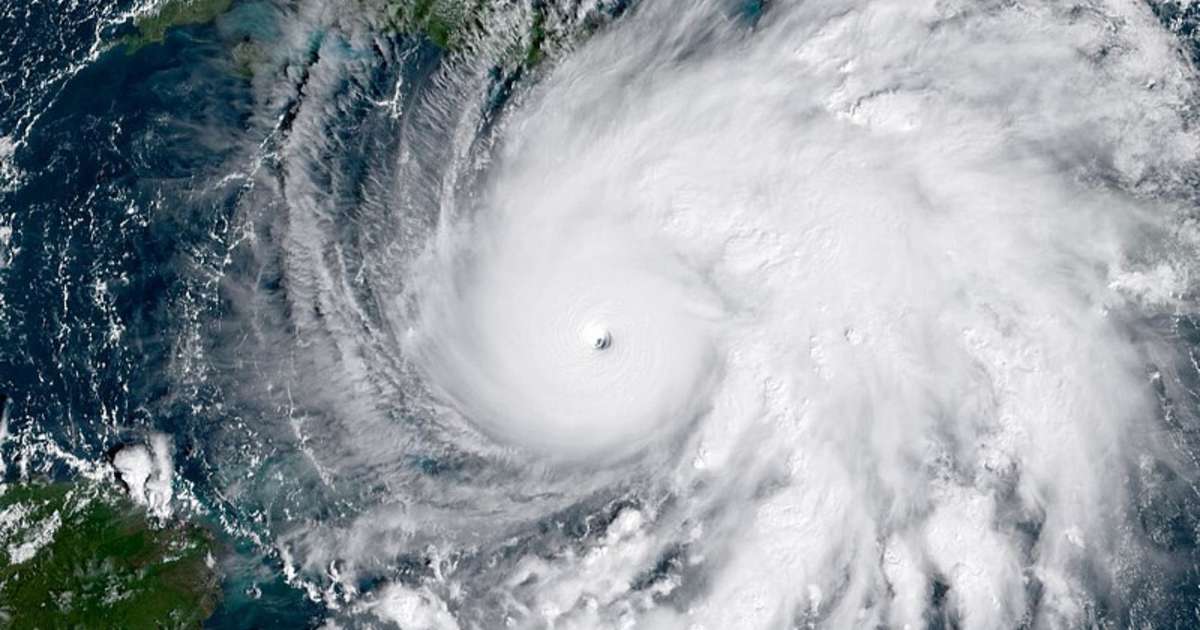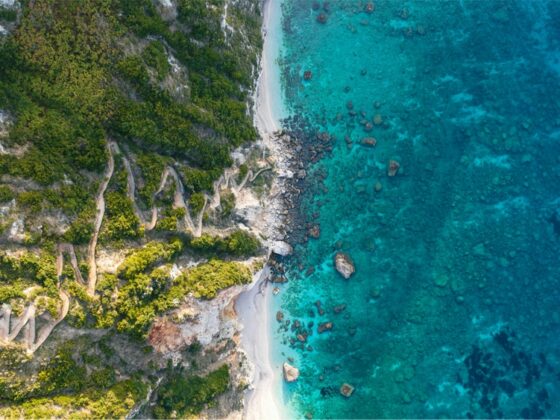
On 28 October 2025, Hurricane Melissa slammed into Jamaica as a Category 5 monster, winds screaming at nearly 185 miles an hour, rain falling by the metre, roofs ripped from homes like paper.
Within 72 hours, more than 70 people were dead across Jamaica, Haiti, and Cuba. Hundreds of thousands were without power or clean water. The damage was pegged at US $7 billion, almost one-third of Jamaica’s GDP. It was the strongest hurricane in Jamaica’s recorded history and one of the most powerful in the Caribbean this decade.
In the two weeks that followed, as Jamaica struggled to clear five million tonnes of debris, global news feeds were dominated by a different storm:
Taylor Swift announces Disney+ docuseries.
Elon Musk says “phones will soon be obsolete.” Premier League clubs set new transfer records.
Each of those stories generated tens of thousands of articles, reposts, and algorithmic impressions. Hurricane Melissa, the deadliest Caribbean disaster of the year, received fewer than 1,500 global mentions in the same time frame.
The algorithm grieved for a pop star’s schedule, not for an island’s survival. Because the Caribbean, it seems, can drown beautifully and invisibly.
Is the Caribbean paying the highest price for our comfort?
Gilbert. Hugo. Georges. Ivan. Emily. Dean. Tomas. Sandy. Irma. Maria. Dorian. Elsa. Beryl. Melissa…..
Over the past 35 years, more than 200 million Caribbean lives have been touched by hurricanes. In some islands, children under 10 have already lived through three Category 4 or 5 events, shaping how they think about the future, their sense of safety, and even their choice of profession.
A 2023 UNICEF regional study found that 70% of young Caribbean respondents fear climate-related disasters will force them to migrate within their lifetimes. And yet, despite facing existential risk, the Caribbean contributes less than 1% of global greenhouse emissions.
Still, when the bill comes due, in lives, homes, and GDP, it is barely covered, barely funded, barely reported in the news.
So why is the World looking away?
The first and simplest reason is geography. Caribbean hurricanes only become “global” when Florida or Texas is in the cone. U.S. newsrooms still set the pace for the rest of the world, so when a storm like Melissa aims squarely at Jamaica, Haiti, or eastern Cuba and not Miami, the oxygen in the story drops immediately. It’s treated as regional weather, not a global event.
Layered on top of that is psychology. People care most about what they can picture themselves living through. For someone in New York, London, or Paris, a Category 5 over Jamaica doesn’t look like their street, it looks like a postcard gone wrong: palm trees, blue water, “somewhere else.” That distance matters. Psychologists call it psychological distance bias, the further away a crisis feels, the less urgency the brain assigns to it. The suffering is real, but the emotional signal is weak.
Then there’s the brutal logic of the attention economy. Late October 2025 was packed: Apple announcements, another Musk soundbite, Taylor Swift content, pre-COP climate positioning. Those stories are cheap to produce, endlessly shareable, and rewarded by algorithms. A slow, muddy, infrastructure-heavy disaster in the Caribbean — blocked roads, contaminated water, farmers wiped out — can’t compete with that. It’s not that editors are evil; it’s that the system is tuned to favor what clicks.
There’s also a long-standing editorial reflex: “the Caribbean gets hurricanes.” Audiences and news desks have been conditioned to see these storms as seasonal, almost routine. Unless the images are apocalyptic, like Irma scraping the northern Leewards or Dorian sitting over the Bahamas, the event gets filed under “annual damage,” even when, as with Melissa, the losses are 28–32% of a country’s GDP. Normalization is doing a lot of harm here.
And finally, politics mutes the volume. With COP30 in Belém just weeks away, international agencies didn’t want to antagonize donor countries by shouting, “This is what your emissions did — pay up.” So instead of outrage, we got administration: “We are coordinating assessments.” It sounds responsible, but it’s bureaucracy masquerading as compassion and it keeps Caribbean devastation at a polite murmur when the moment called for a siren.
The institutions checked the boxes but they didn’t ring the bell
To be fair, this wasn’t a total vacuum. The big players did what they are designed to do. UNDP, WFP, the World Bank and regional bodies all mobilized quickly. Situation reports were issued, assessment missions were sent, coordination calls were held. Jamaica’s US $150 million catastrophe bond was triggered almost immediately, one of the fastest payouts of its kind. On paper, that looks like a success story.
But then you look at the numbers.
Melissa’s damage bill is hovering around US $7 billion. The payout was US $150 million. That’s about 2%. If your entire house burns down and your insurer hands you twenty cents on the dollar, you don’t call that resilience, you call that proof the system isn’t built for a fire this big.
That’s what happened here: the instruments worked, but the scale didn’t. The machinery of international response functioned exactly as designed and that’s the problem. It’s still designed for discrete, medium-sized disasters, not for climate-era, GDP-level shocks that wipe out decades of infrastructure, housing, and agricultural investment in a single week.
And you could hear that mismatch in the language. The statements were classic multilateral prose:
“We are coordinating with national authorities.”
“We are conducting needs assessments.”
“We stand in solidarity with the people of Jamaica.”
All fine. All respectable. All utterly too small for what actually happened.
Because a Category 5 hurricane that slams three Caribbean countries at once is not a moment for administrative sympathy, it’s a moment for alarm, for political escalation, for calling out the financing gap. It was the perfect opportunity to say, loudly and publicly:
“This level of loss is unlivable. Current tools are nowhere near enough. We need structural, automatic, large-scale climate and loss-and-damage finance and we need it now.”
That sentence never came.
So yes, the institutions checked the boxes but they didn’t ring the bell. And when global bodies stay in “procedure mode,” the rest of the world assumes: oh, this is under control. It wasn’t.
The real problem
Hurricane Melissa wasn’t just another storm, it was a mirror. A mirror reflecting what the world values, what it chooses to ignore, and how blind we’ve become to our own warnings.
Melissa revealed the hierarchy of empathy that governs global attention: visibility follows money, not morality.
When climate disasters hit the wealthy North, they’re framed as “wake-up calls.” When they strike the Global South, they’re “seasonal challenges.” When wildfires turned California’s skies orange, the world called it climate collapse. When rivers rose in Germany and Belgium, entire governments called emergencies.
But when a Category 5 hurricane erased one-third of Jamaica’s economy, the story barely trended.
That’s not oversight. That’s pattern. The pattern of a civilization that treats small islands as beautiful backdrops, not fragile frontlines.
But the physics don’t care about GDP. The same climate system that drowned Falmouth and Kingston will flood Miami, Venice, and Barcelona if the oceans keep warming.
The Caribbean is not the edge of the world, it’s the front line of everyone’s future.
What happened in Jamaica is not a local tragedy; it’s a preview. Every metric that made Melissa so devastating — hotter seas, slower storm movement, record rainfall — is now being observed in the North Atlantic and Mediterranean. Scientists warn that by 2050, cities like Miami, New Orleans, Alexandria, Bangkok, and Rotterdam could face annual flooding on a scale we once reserved for hurricanes. Even London and New York will be at risk from rising storm surges that make Melissa look less like an exception and more like a manual for what’s coming.
And it’s not just island nations anymore. By the end of this century, 1 in 10 people alive today will live in cities at risk from rising seas or extreme heat. That’s 900 million people, from Kingston to Kolkata, from Miami to Marseille. The next “Caribbean disaster” could just as easily be yours.
Make the Algorithm Care About the Caribbean
So make the algorithm care about the Caribbean — because if we don’t, it will keep mistaking distraction for destiny.
Right now, the global attention machine is doing exactly what it was built to do: amplify celebrity, monetize outrage, and bury complexity. It rewards what glitters and ignores what drowns. It will always push a pop star’s heartbreak ahead of a nation’s collapse, a gadget launch ahead of a humanitarian crisis. That isn’t bias — that’s engineering.
But the climate doesn’t care about engineering. It doesn’t care about trending topics or time zones. It doesn’t scroll, pause, or buffer. It simply moves.
And it’s already moving, from Kingston to Key West, from Port-au-Prince to Miami, from Havana to Houston, from the Bahamas to Barcelona. Every coastline that looked away is already on the map of what comes next.
Hurricane Melissa was never just a Caribbean story. It was a trailer for the global disaster film we’re all starring in and still pretending to watch from the safety of the audience.
That’s the real warning: not that the Caribbean is fragile, but that the rest of the world is hypnotized, sedated by pixels while the planet rewrites its own script.
So yes, make the algorithm care, break it, hack it, shame it, rewire it, because silence is now an accomplice.
A distracted world is a doomed world.
And if we don’t start paying attention, the next hurricane won’t just rewrite the Caribbean, it will rewrite the map of who gets to look away.
Aradhana Khowala
CEO & Founder – Aptamind Partners
Aptamind Partners








